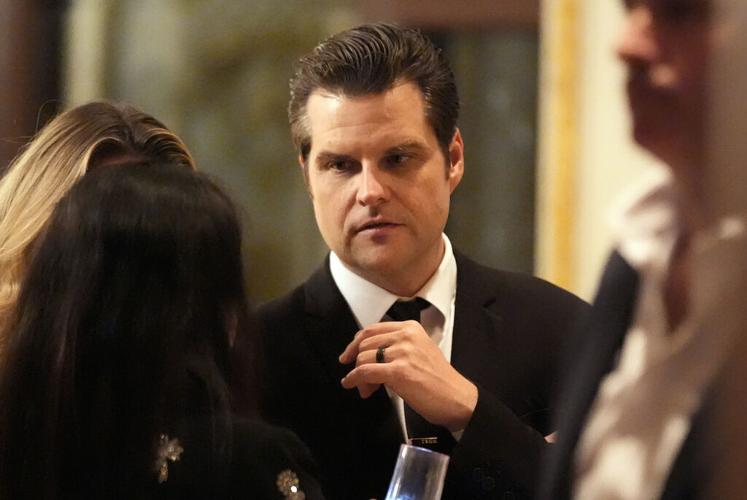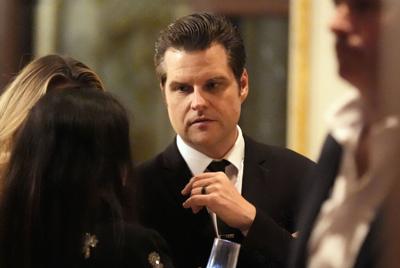Donald Trump will nominate roughly 1,200 people to fill top federal jobs that require Senate confirmation. These include cabinet secretaries, ambassadors, judges and U.S. attorneys.
�մǻ岹��’s is already dominated by these appointments, especially the more controversial ones. But this isn’t the first time a president had to struggle to get his people confirmed.
Throughout history, nine cabinet nominees have been rejected by the Senate.
The president who suffered the most cabinet confirmation losses was John Tyler, who became president by succession, not election, in 1841. Though Tyler’s party, the Whigs, controlled the Senate, his policy differences and poor personal relations with senators from his own party, more so than problems with the men he nominated, led to four confirmation defeats.

Ron Faucheux
Presidents Andrew Jackson, Andrew Johnson, Calvin Coolidge and Dwight Eisenhower also lost cabinet confirmation votes. The most recent occurred in 1989 when GOP Sen. John Tower’s own Senate colleagues kept him from becoming secretary of defense in George H.W. Bush’s administration. Accusations of personal misconduct and ties with defense contractors did him in.
Eleven Supreme Court confirmations also have been rejected. The most recent was Robert Bork’s. Nominated by Reagan, Bork lost a Senate vote after a bitter partisan battle.
In addition to formal Senate rejections, presidents have pulled down nominations that were likely losers. Eighteen cabinet and 11 Supreme Court nominations were withdrawn before a Senate vote. In some cases, nominees took themselves out of consideration, as Matt Gaetz did this past week when he ended the quest to become attorney general.
Withdrawal of troubled nominations is a gift to senators who don’t want to oppose their party’s president, but who would rather not go on record supporting the confirmation of a dud.
Bill Clinton withdrew two nominations for attorney general, one for secretary of defense, one for CIA director and one for secretary of veterans’ affairs. George W. Bush had two nominations withdrawn, for secretary of labor and secretary of homeland security. Barack Obama had three; one for secretary of health and human services and two for secretary of commerce.
Trump pulled back four cabinet nominations during his first term. One was John Ratcliffe’s to become director of national intelligence. In a second try, Ratcliffe was confirmed the next year; he’s currently Trump’s pick to be CIA director. Joe Biden had one withdrawal, that of Neera Tanden to be director of the Office of Management and Budget.
Wide-ranging issues have caused these modern-day nomination withdrawals, including domestic violence, sexual misconduct, extreme partisanship, conflicts of interest, hiring undocumented workers, lack of relevant experience, unpaid taxes and ongoing investigations.
In the past, presidents have sometimes used “recess appointments” to avoid Senate confirmation fights. In these cases, appointees nominated when the Senate is out of session can take office pending a later determination.
Recess appointments are temporary, but can be stretched to durations of nearly two years. It’s unclear whether Trump will try to use recess appointments to speed up the confirmation process, which can be painstakingly slow, or to circumvent it altogether, which Democrats fear.
According to the Congressional Research Service, Ronald Reagan made 240 recess appointments, George H.W. Bush 77, Bill Clinton 139, George W. Bush 171 and Barack Obama 32. The number, however, declined dramatically after 2014 when the Supreme Court ruled in the Noel Canning case that pro forma Senate sessions — when the body is officially in session, but isn’t really doing anything — are adequate to block recess appointments.
What do voters think?
The latest Economist/YouGov poll, conducted Nov. 17-19, tested Trump’s first round of appointments. The least popular was Gaetz. The most popular was Marco Rubio, who Trump nominated to become secretary of state. Fifty-two percent of voters approved of Rubio’s appointment and 33% disapproved.
Robert Kennedy, Jr.’s nomination for secretary of health and human services also drew majority support, at 51%; 42% were opposed.
The poll showed that 43% of voters approved and 39% disapproved of Pete Hegseth’s nomination to become secretary of defense. His presence on Fox �ƹϴ�ý likely boosted his early support among Republicans, of which 70% favored his appointment.
Tulsi Gabbard, nominated to be Director of National Intelligence, was supported by 46% of the electorate and opposed by 37%. A former Democrat, her base of support is now decidedly Republican: 18% of Democrats and 78% of Republicans favor her appointment.
Events are moving quickly. It’s only just begun.



